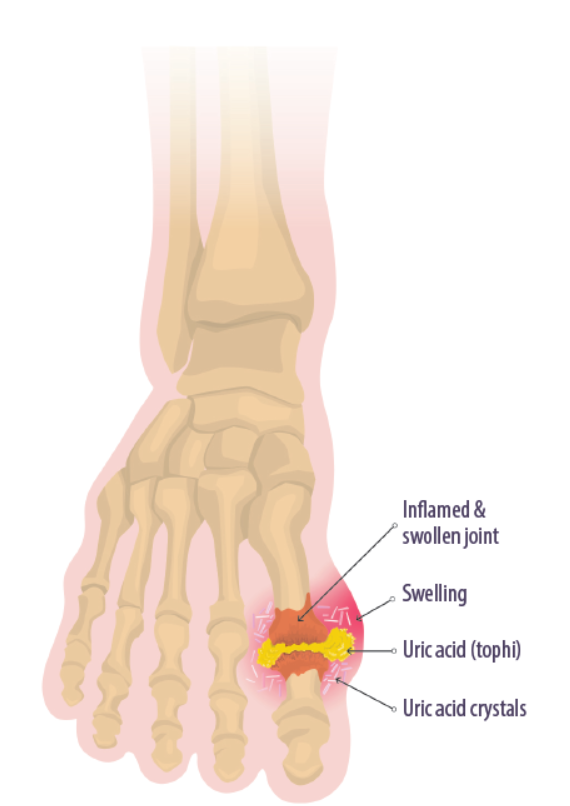
More than nine million U.S. adults are living with the painful symptoms and disability caused by gout. Diet is an important part of avoiding flare-ups.
What is Gout? Gout is a common form of inflammatory arthritis linked to high levels of uric acid in the body. Uric acid is made when purines—compounds that occur naturally in the body and are also found in some foods and beverages—are broken down. Typically, uric acid in the bloodstream is carried to the kidneys, where it exits the body in urine. If blood levels of uric acid are too high, the kidneys can’t keep up and the blood uric acid concentration rises (a condition called hyperuricemia). In people who are predisposed to gout, this can lead to the formation of uric acid crystals that get lodged in the joints, particularly the lower body joints like toes, ankles, and knees. The accumulation of these sharp-edged crystals sometimes triggers inflammation which can result in a painful gout attack, or flare-up. Not everyone with hyperuricemia will get gout, but once it develops it’s likely to return without treatment to lower uric acid levels.